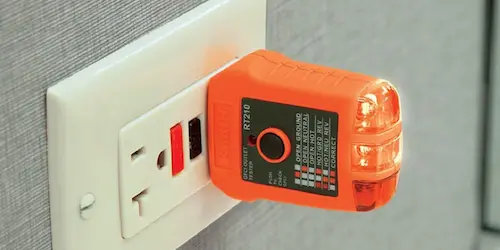The Advantages of Installing GFCI Outlets
National Electric Code requires that all homes be equipped with ground fault circuit interrupters. Most GFCI outlets are found in areas around the home that are nestled in wet or damp areas.
They can be installed in kitchens, laundry rooms, bathrooms, outdoor areas, crawl spaces, garages, and more. According to recent changes in the electrical code, GFCI outlets are now required for all single-phase outlets at 125 volts.
Besides these electrical code requirements, there are several reasons that you should switch to GFCI outlets:
Electrical Shock Prevention
GFCI outlets are designed to monitor the flow of electricity. The outlet has a sensor that detects tiny amounts of electricity flowing the wrong way. If a device plugged into a GFCI outlet touches water, the outlet quickly cuts power to all its sockets.
A GFCI outlet detects tiny changes in electrical current, making it an ideal addition to your home. By utilizing GFCI protection, you can easily avoid ground fault shocks.
Recommended Products
Prevent Electrical Fires
Electrical fires can be caused by a number of things, and ground fault protection can prevent these fires from happening. Over time, your home's wiring can age, and its insulation can start to deteriorate. It’s no surprise that after a while, these damages can cause electrical currents to leak. This electricity leakage can not only cause shock hazards but could spark electrical fires in the home as well.
Did you know that…
According to ESFI, home electrical fires account for an estimated 51,000 fires each year. Just by installing GFCI outlets, you can lower the risk of electrical fires by 80%.
Prevent Damages to Your Electrical Devices
Electricity leaks can cause your appliances to get damaged over a period of time. GFCI outlets constantly cycle the same amount of power between the power source, the appliance, and back to the outlet.
If even a tiny amount of electricity leaks, the GFCI will trip and cut all power to the device. Frequent leaks in the electrical current can severely damage your appliances. GFCI receptacles help prevent these damages and have a higher life expectancy.
Recommended Reading
Electrical trips can occur due to worn out insulation, conductive dust or debris, water, or electrical wiring deterioration. Discover more ways to troubleshoot your GFCI if it starts to trip.
Routine testing can ensure your GFCI outlets work properly as well as let you know when it's time to replace them.
Recommended Products
Receive special deals and more, right to your inbox
Receive special deals and more, right to your inbox







